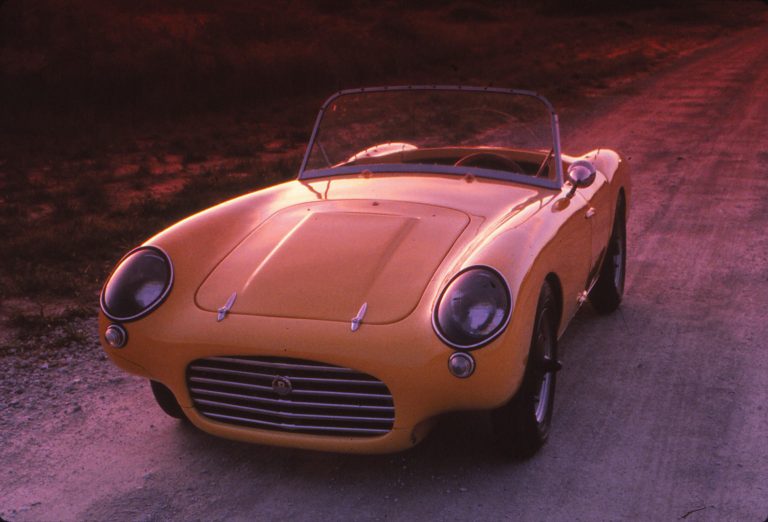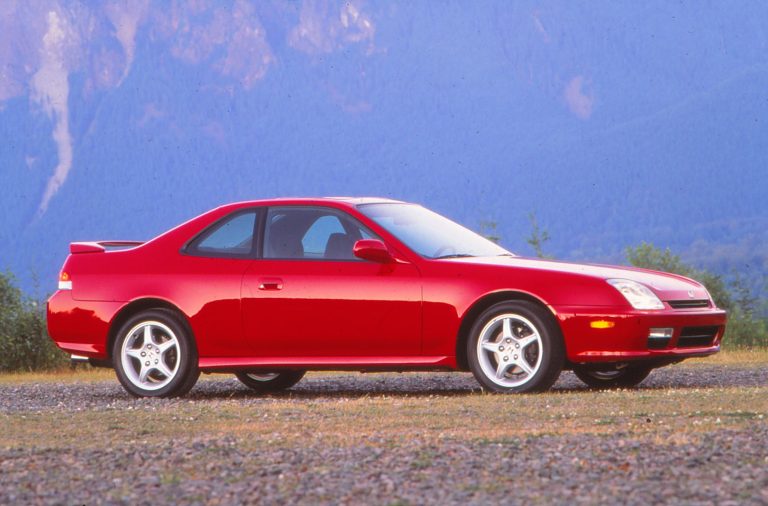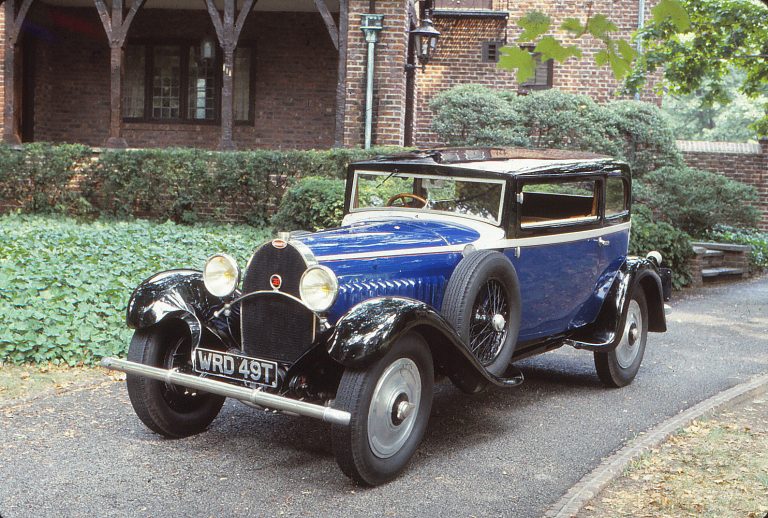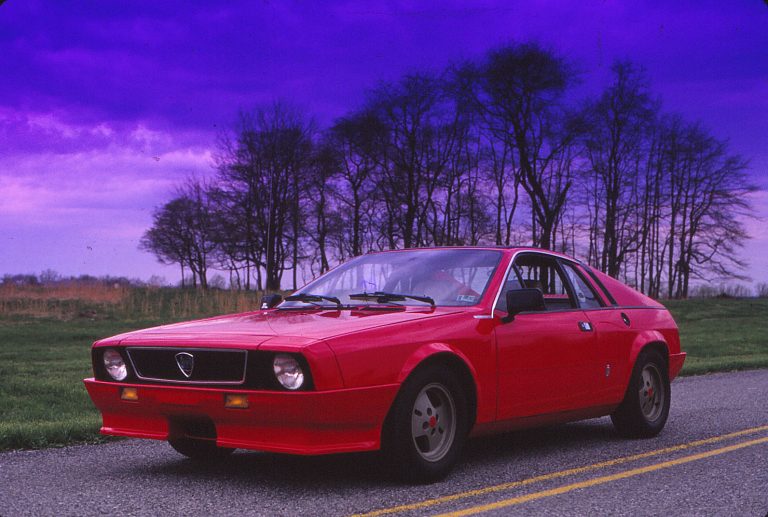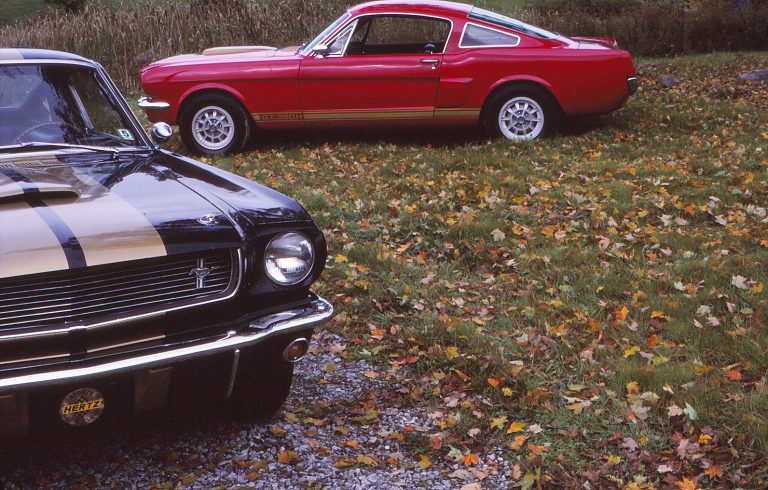History originally published in AutoWeek October 15, 1990
Charles Deutsch was the designer and Rene Bonnet made the engines go faster, together these two Frenchmen built cars. The cars they built were built to win races.
And win races they did. A never more than semi-formal alliance that began when Bonnet started a Citroen agency in a garage rented from Deutsch and his mother, the pair started racing in 1938 in a D.B.1, a special based on the Citroen 11CV Traction Avant. After WW II, Citroen continued to be the power unit of choice for the race cars and at the 1949 Salon de Paris, D.B. showed a prototype of a production GT car powered by the French marque’s engine, though actual production was nixed by Citroen policy. Beginning in ‘49, however, a series of D.B. Formula 3 cars using Panhard’s horizontally opposed two-cylinder were built, the start of a relationship between D.B. and Panhard that would continue until 1961.
A number of racers, including single-seaters, were built, all but a few using the tiny Panhard twin and front-wheel drive. Competition-bodied D.B.-Panhards, as they were known, won the Index of Performance at LeMans in 1953, ‘54, ‘56, ‘59, ‘60 and ‘61. Index and/or class victories were also racked up at Nassau, Daytona, Sebring, the Mille Miglia and the Tourist Trophy in Great Britain.
It was all done with the engine mounted as it was in the Dyna Panhard from which it came, the engine ahead of – and transmission behind – the front axle line. A nifty little popper, the Panhard engine was as sophisticated as it was compact. Air-cooled, it had a roller-bearing crank shaft and one-piece connecting rods. The cylinders were sleeved light alloy with integral heads featuring cross-flow hemispherical combustion chambers. Overhead valves were closed by torsion-bar springs, one spring for two valves; opening one valve tightened the other. In standard and racing trim, valve lash was hydraulically adjusted at the rocker. Panhard made 610 cc and 851 cc versions, and D.B. added its own 747 cc edition for three-quarter liter classes.
It was in 1952, however, that Deutsch and Bonnet began work on what was to become their most popular and versatile car, a GT coupe that could be used with equal facility to chase groceries or Class H trophies, or to play tortoise to the fragile hares in endurance races. Using only the engine/transmission – modified for performance – from Panhard, the car was built around a superb tube frame: the main structural piece was a large central beam that runs back to a “T” for the rear suspension mounts and forward to mounts for the engine, transmission and front suspension.
The rear suspension was an independent torsion bar unit, while a pair of transverse leaf springs and “triangulation links” located the front end. Although at first bodies were of steel or aluminum, fiberglass was utilized for all cars from about 1955 on.
Befitting the casual business relationship between Deutsch and Bonnet, the coupe never seemed to have any real name of its own. Although it was designated HBR5, it was called variously the Sports Saloon, the Grand Turismo Sports Coupe (also spelled Grand Tourisme), the D.B.-Panhard GT, and simply the Deutsch-Bonnet. Regardless, it proved – until the Sprites took over in the 1960s – to be the scourge of SCCA’s H-Production class behind drivers such as Howard Hanna, Ray Heppenstall and Dick Toland.
Standard was a mere 58 HP, but D.B. could bump it to 70-plus, all out of 851 cc. Combine that with a curb weight of 1470 pounds, huge drum brakes and one of the era’s most aerodynamic bodies, and it is no surprise that the little coupe won so often.
Now restored for vintage racing, one of the class H terrors was found in a barn (where else?) in Pennsylvania in the late ‘70s by Walter Koopman of Cherry Hill, N.J. Although it required a frame-off restoration, Koopman’s coupe had no doubt been a racer. It had a single hoop rollbar and a dual-plug 851 cc engine with dual-point distributor and one of the most unusual intake manifold ever: It had mounts for three carbs and could be run with one downdraft or a pair of side drafts, though Koopman says the latter arrangement winds up grossly over carburetor at low speeds. Now rebuilt, Koopman estimates the engine produces about 60 hp.
The car was refinished in a stock silver and burgundy and the interior as per original in diamond-pattern vinyl. Although the back seat is little more than an upholstered shelf, the front seats are supportive and plush for a racer. The trunk has two compartments, one for the spare and the other for the official FIA suitcase (which is handy if you vacation on the “24 Hours in France” plan).
Retard the spark and pull the choke and the engine starts easily but runs with more shake than it seems two horizontally opposed piston should make. Put it in first – no, wait, that’s third! The D.B. has first back into the left, were second normally is. Second is were fourth should be, third is in the first slot and fourth where you’d expect third. All because Panhard mounted the shifter on the dash and DB put it on the floor like it – almost—should be. Reverse? It’s there, but it’s better if you don’t stop were you have to back up.
Acceleration is, um, adequate and Koopman says it tops out at about 100 mph. A 1957 Road & Track test on a 51 hp D.B. yielded a 0-60 time of about 21.3 seconds. Ride at slow speeds is bouncy, smoothing out at speed picks up, and it really doesn’t feel like it leans in corners nearly as much as it looks from trackside. Or maybe I didn’t go fast enough. But it does have a turning circle small enough to do a U-turn in an efficiency apartment’s bathroom. Well, almost.
Even at speed, the engine sounds slow, almost like a VW Beetle running on two cylinders. If you can count fast, you won’t have to look at the tach. Just keep track of the power pulses. Or shift when the valves start to float at 5800 rpm or so.
Rene Bonnet broke up D.B. in December 1961, deciding to go his own way, powered by Renault. It was one of Charles Deutsch’s cars, however, that won the Index of Performance in 1962, powered by Panhard.
But there begins another story.





